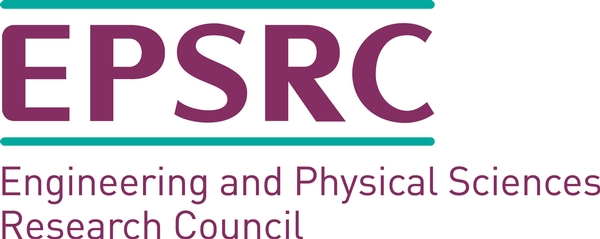


People
Papers
Presentations
Audio demonstrations
Indo-European digits database
Events/activities/blog
@ancientsounds@mastodonapp.uk
NB We've converted a number of our presentations from Open Office format to Microsoft Powerpoint .pps files below, to make the embedded audio available as widely as possible. Unfortunately, in some cases that messes up the format of the text a little. But we think it's better to be able to hear the audio than to worry too much about the format of the text.
J Coleman Voices from the Past. Café Scientifique, Shanklin, Isle of Wight, 28 September 2015. (An abbreviated version of the Bradford talk.)
J Coleman Voices from the Past. Oxford Alumni Weekend, 18 September 2015. (A re-run of the Bradford talk.)
J Coleman Voices from the Past. British Science Festival, Bradford, 7 September 2015. PowerPoint show is available to download here.
J Coleman, J Aston and D Pigole (2015) Reconstructing the sounds of words from the past. Presented at ICPhS 2015: the 18th International Congress of Phonetic Sciences, Glasgow, 10-14 August 2015. The paper is available from the "papers" page (see sidebar at left).
The poster we presented is available here.
Audio examples are embedded in the PDF conference paper as MP3 files, or here in .wav format:
- the [u:n] sound of Italian or Spanish uno as a plausible proxy for the sound of un- in Latin ūnus
- the acoustic-historical path from Latin [u:n-] via Portuguese [ũ]
- to French [œ̃]
- thence to the more recent French pronunciation [ε̃]
- The acoustic-historical path from Latin [u:n-] to the more recent French pronunciation [ε̃]
- the older and more conservative French form [œ̃]
- The continuum from Italian [due] to French [dœ]
- Monophthongisation illustrated by the continuum from Spanish [seis] to French [sis]
- and diphthongisation by Spanish [dos] to Brazilian Portuguese [dois]
- The development from final [-s] to [-ʃ] after [i] in (Standard) Portuguese illustrated by Spanish [tres] → Portuguese [treiʃ]
- Spanish [seis] → Portuguese [seiʃ]
- Postalveolarization plus affrication is also seen in e.g. French [set] → Portuguese [setʃ]
- and
Italian [ot:o] → Spanish [otʃo]
J Coleman Ancient Sounds: mixing acoustic phonetics, statistics and comparative philology to bring speech back from the past. Short project presentation at AHRC Science in Culture Innovation Awards meeting, London, 14/1/2015. Slide 9 contains embedded audio files illustrating how we model the change from Latin un- into Modern Portuguese um-.
- [un-o] - recording of Spanish un- edited from uno, a proxy for the un- portion of Latin unus.
- LPC spectrogram 1 -
synthetic imitation of Spanish/Latin un-.
- [ũ] - recording of Portuguese um.
- LPC spectrogram 2 - synthetic imitation of Portuguese um-.
- Interpolated LPC spectrograms - how to morph Latin un- into Modern Portuguese um-.
Slide 10 contains embedded sound
files illustrating how we model the change from a predecessor of
French un (that sounded
more like Modern portuguese um-) into more conservative and
more contemporary pronunciations of Modern French.
- [ũ] - recording Portuguese um.
- Interpolated LPC spectrograms (upper part) - how to morph Modern Portuguese um- into conservative Modern French [œ̃] and (lower part) into more contemporary French [ɛ̃]
Slide 10 contains embedded audio files illustrating:
- The result of adding two sound files together (Italian uno + due)
- The result of adding noise (the sound of a dog barking) to speech (French neuf)
- The result of subtracting the noise from the previous sound
Slide 11 contains an audio file
illustrating the result of averaging two sound files
(½ of French un plus ½ of Portuguese um).
Slide 24 contains embedded audio files illustrating how we model the change from Latin un- into Modern Portuguese um-.
Slide 25 contains embedded sound files illustrating how we model the change from a predecessor of French un (that sounded more like Modern portuguese um-) into more conservative and more contemporary pronunciations of Modern French.
Slide 26 contains embedded audio files illustrating how we could transform Italian due (a proxy for the initial part of Latin duo) into French deux.
Slide 27 contains embedded audio files illustrating how we model the change from Spanish dos into Modern Portuguese dois.
Slide 28 contains embedded audio files illustrating how we model the change from Spanish tres (a proxy for Latin tres) into Modern Portuguese treis. Slide 29 illustrates a parallel development for the number six.
Slide 30 illustrates the more complex combination of vowel and consonant changes from Latin tres (exemplified by the Italian proxy tre) to French trois.
Slide 31 illustrates a transformation from Spanish seis to French six.
Slide 32 illustrates the change from [set] (a recording of French sept), an ancestor of Modern Portuguese sete.
Slide 33 illustrates the development of Spanish ocho from an ancestor otto, as in Italian, which represents the link between Latin octo and Spanish ocho.
(½ of French un plus ½ of Portuguese um).
Slide 24 contains embedded audio files illustrating how we model the change from Latin un- into Modern Portuguese um-.
Slide 25 contains embedded sound files illustrating how we model the change from a predecessor of French un (that sounded more like Modern portuguese um-) into more conservative and more contemporary pronunciations of Modern French.
Slide 26 contains embedded audio files illustrating how we could transform Italian due (a proxy for the initial part of Latin duo) into French deux.
Slide 27 contains embedded audio files illustrating how we model the change from Spanish dos into Modern Portuguese dois.
Slide 28 contains embedded audio files illustrating how we model the change from Spanish tres (a proxy for Latin tres) into Modern Portuguese treis. Slide 29 illustrates a parallel development for the number six.
Slide 30 illustrates the more complex combination of vowel and consonant changes from Latin tres (exemplified by the Italian proxy tre) to French trois.
Slide 31 illustrates a transformation from Spanish seis to French six.
Slide 32 illustrates the change from [set] (a recording of French sept), an ancestor of Modern Portuguese sete.
Slide 33 illustrates the development of Spanish ocho from an ancestor otto, as in Italian, which represents the link between Latin octo and Spanish ocho.
J Aston and J Coleman, Statistics and Speech, Department of Statistics, University of Warwick 27/11/2014.
D. Pigoli, Distance and inference for covariance functions. SuSTain workshop on high dimensional and dependent functional data, Bristol, 11/9/2012/
J Coleman, Gradual and quantal sound change, Functional Phylogenies Workshop, Oxford, 27/9/2010. The Functional Phylogenies project was devoted to the marriage of functional data analysis with phylogenetic modelling. This presentation kicked off a programme for applying such methods to the reconstruction of sounds of ancient languages.

